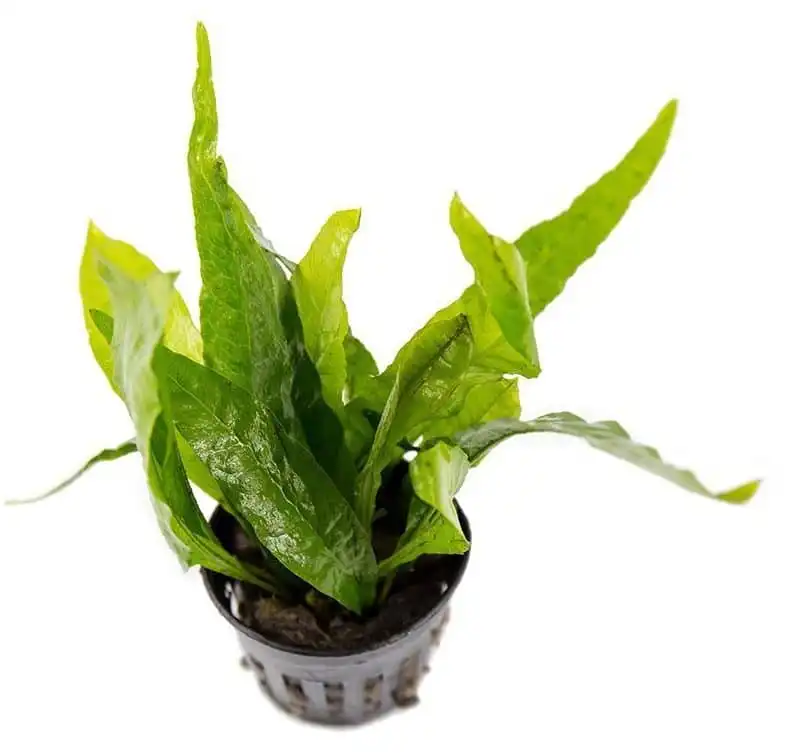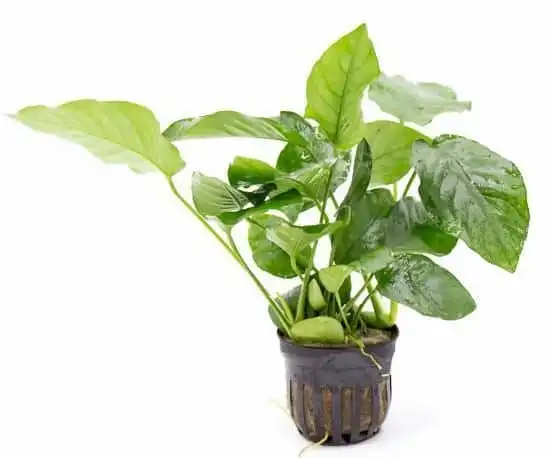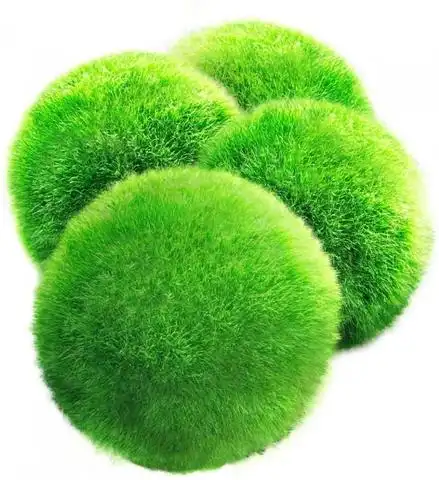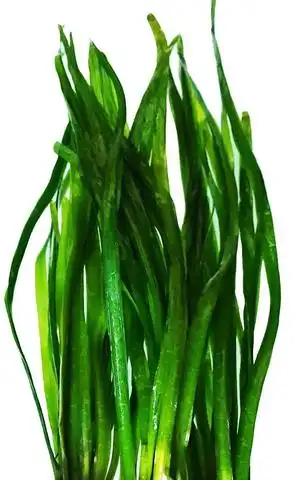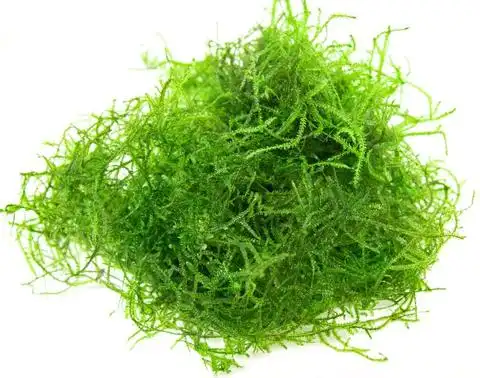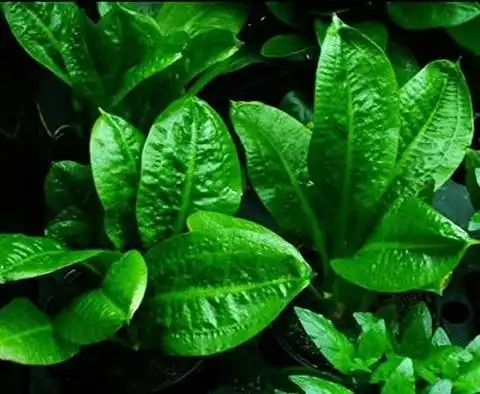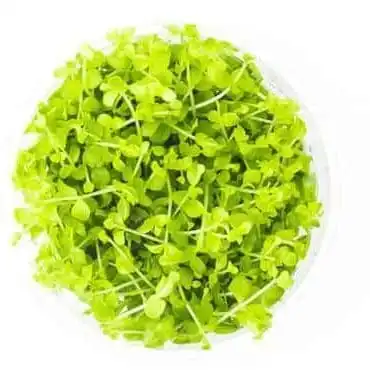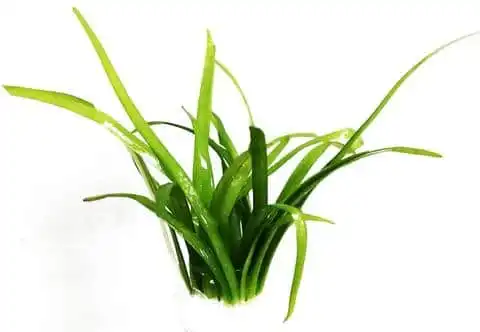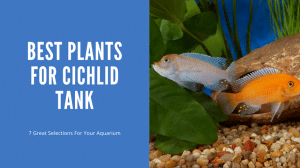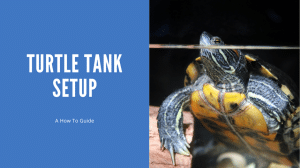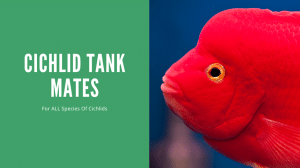Thank you for visiting! By the way… any links on this page that lead to products on Amazon and other stores/partners are affiliate links Aquarium Store Depot earns a commission if you make a purchase.
Are you struggling to find an aquarium plant that won’t instantly die on you?
In this blog, we share the best aquarium plants for beginners, from background, background, and even carpenting plants.
With over 25 years of experience in the aquarium hobby, I’ve assisted countless clients, hobbyists, and readers like you in overcoming their brown thumb woes. I’ve personally grown many of these plants in real world scenarios to determine the best beginner aquarium plants to buy.
The Top Picks
This was a tough pick because there are so many good easy to care aquarium plants on our list. Below are the recommended aquarium plant picks by background placement:
- Best Foreground Plant – Java Moss
- Best Midground Plant – Anubias Barteri
- Best Background Plant – Java Fern
The Candidates – A Quick Comparision
Below is a list of the easy care for aquarium plants for beginners. You can purchase them easily online. I have hand-selected reputable vendors and will discuss the pros, cons, and specs of each plant below.
| Picture | Name | Features | Link |
|---|---|---|---|
Editor’s Choice 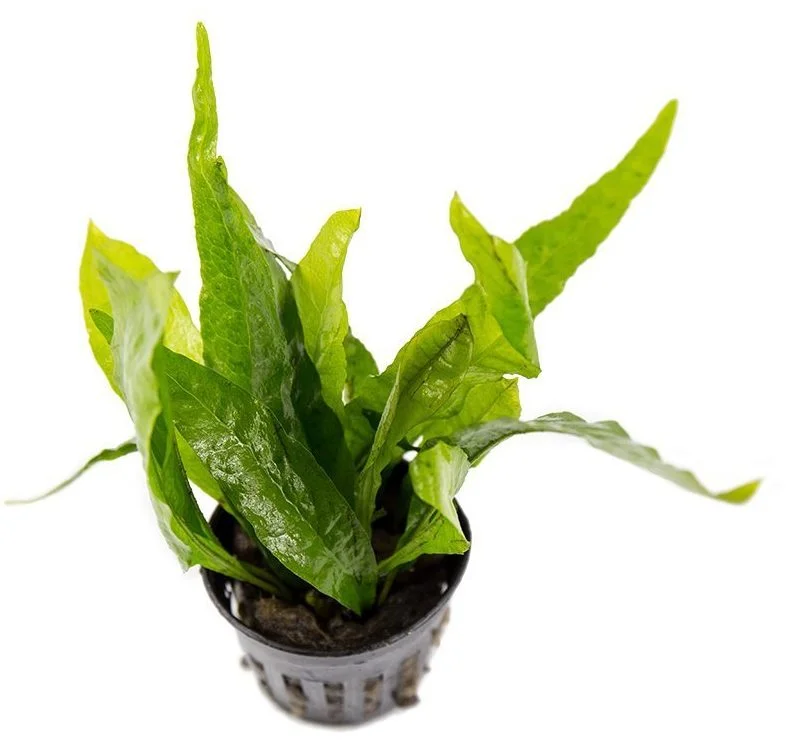 | Java Fern |
| Click For Best PriceBuy On Amazon |
Best Value 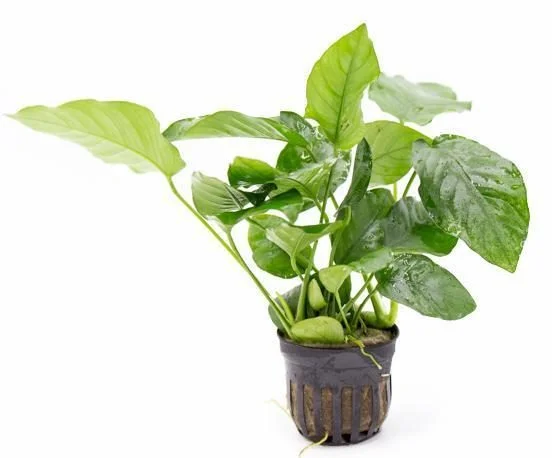 | Anubias Barteri |
| Click For Best PriceBuy On Amazon |
Budget Option  | Marimo Moss Ball |
| Click For Best PriceBuy On Amazon |
 | Vallisneria |
| Click For Best PriceBuy On Amazon |
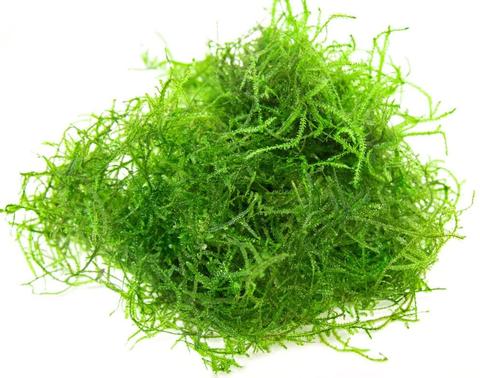 | Java Moss |
| Click For Best PriceBuy On Amazon |
 | Amazon Sword |
| Click For Best PriceBuy On Amazon |
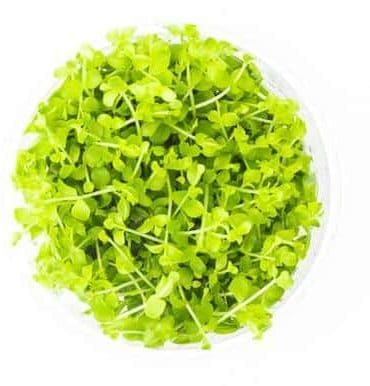 | Monte Carlo |
| Click For Best PriceBuy On Amazon |
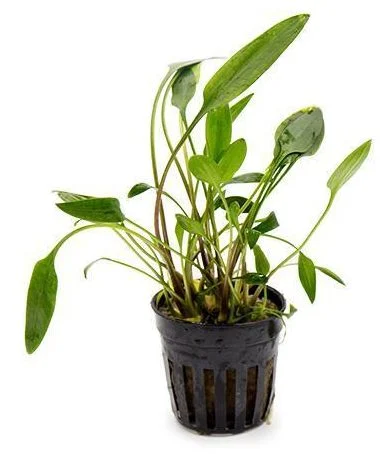 | Cryptocoryne Lutea |
| Click For Best PriceBuy On Amazon |
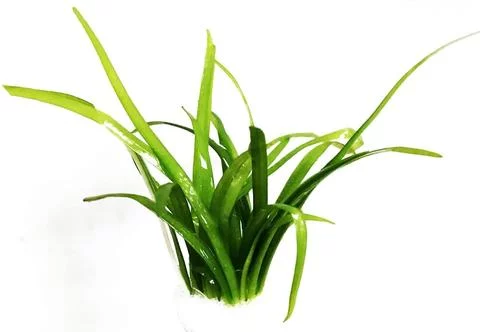 | Dwarf Sagittaria |
| Click For Best PriceBuy On Amazon |
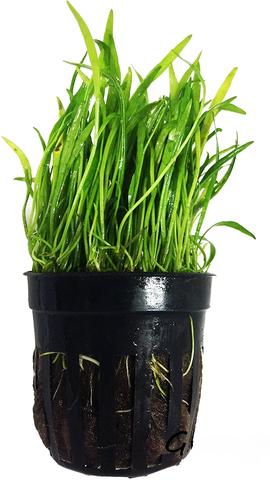 | Micro Amazon Sword |
| Click For Best PriceBuy On Amazon |
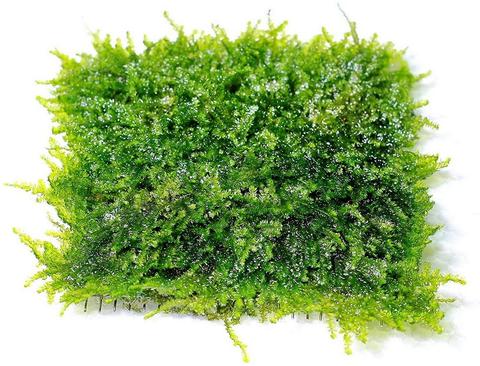 | Christmas Moss |
| Click For Best PriceBuy On Amazon |
The 11 Best Beginner Aquarium Plants
Let’s go into further detail about each different plant and why they are so great for beginners. I also left a video I created for you visual learners. If you like this video, share it with your friends and subscribe to my YouTube channel.
1. Java Fern – Great For Low Tech Tanks
Editor's Choice
Hardy, easy to care for, and requires only basic lighting to grow. This is the perfect aquarium plant for beginners!
Java Fern is the staple plant for any low-tech planted tank. It is very hardy and straightforward to take care of. Java Fern does not have many requirements and feeds off your water column. It has the added benefit of not being liked by most fish. This means they can be used in aquariums with fish that eat aquarium plants. It can be attached to rocks or driftwood. There are no substrate requirements for Java Fern, giving you freedom on how you create your aquascape.
This Java Fern offered online is a rooted specimen 4″ in size. You can build a sizable plant for a reasonable price.
The only downfall to Java Fern is its look. Java fern has a Jurassic look due to its unique shaped green leaves. Because of that look, many aquascapers tend not to like it as its shape stands out among more classical plants and groundcover.
Pros
- Very easy to grow
- Many fish won’t eat it
Cons
- Unique looks make it not suitable for some aquascapes
Java Fern Specs
- Light Requirements – Low to Moderate
- Growth Rate – Moderate to Fast
- Water Parameters – 72 to 82 degrees F, pH 6.0-8.0, soft to moderately hard
- Best Location – Mid-Ground
- Feed Type – Column Feeding
2. Anubias Barteri – Hardy Mid-Ground Greenery
Best Value
This hardy plant is super versatile. Can be placed anywhere in the aquarium and looks amazing when aquascaped
Anubias is the ultimate easy to care for mid-ground plant. It will grow in any condition and is very attractive when fully mature. It is a very forgivable plant, and since it is column feeding, it can be placed anywhere. Many aquarists will attach this plant to driftwood or aquarium rocks since the rhizomes are best left in the open to prevent rot. Most fish will not eat it. It is one of the few plants that will work with Goldfish and African Cichlids. Like Java Fern, Anubias does not require a specialized substrate and will happily grow even in bare bottom tanks.
This Anubias Barteri by UNS is one of the highest quality plant deals online. This Barteri variant is known as the “Board Leave” type. It is a tissue culture plant grown in-vitro in laboratories specializing in propagating aquatic plants. This method of growing plants ensures the plant is free from any pets. It ensures you get the highest quality plant available. If you are looking for a small plant, check out Anubias Nana.
Pros
- Most fish won’t eat it
- Very hardy and forgivable
- Elegant looking
Cons
- Grows slow
- Rhizomes should be left above substrate when planted
Anubias Barteri Specs
- Lighting Requirements – Low
- Growth Rate – Slow
- Water Parameters – 74 to 82 degrees F, pH 6.5-7.5, soft to moderately hard
- Best Location – Mid-Ground
- Feed Type – Column Feeder
3. Marimo Moss Balls – The World’s Easiest
Budget Option
Grows anywhere, cheap, and soaks up nurients. An excellent beginner plant
The Marimo Moss ball is known to many as the world’s more accessible aquarium plant in the industry. It is bulletproof and requires very little care. Its cute round shape makes them perfect for small Betta Fish and Freshwater Shrimp Tanks. In mass quantities, they are known for reducing nutrient levels. They are sold at such low prices that most people purchase them in bulk and drop them into their tanks. They are native to colder waters, making them good candidates for coldwater tanks.
These Marimo Moss balls are sold at a jaw-dropping price. Marimo Moss balls only have one con that I can think of. They collect detritus in your aquarium, and as a result, they will darken and look ugly in your tank over time. This is addressed by washing the ball in your aquarium water.
Pros
- Small enough for nano tanks
- Great for nutrient reduction
Cons
- Small
- Look ugly as detritus collects off it
Marimo Moss Ball Specs
- Light Requirements – Low
- Growth Rate – Moderate
- Water Parameters – 60 to 80 degrees F, pH 6.0-8.0, soft to moderately hard
- Best Location – Foreground
- Feed Type – Column Feeder
4. Vallisneria – Easy To Grow Background
One of the easiest background placement aquarium plants that can be kept. Provides excellent shelter for fish
If you want the ultimate easy to care for background aquarium plant, Vallisneria is the plant. It is super easy to care for and not demanding. It gets very tall, usually over 18″ if left to grow, and will quickly turn a background into a jungle-like backdrop. It supplies a lot of shelter for your fish and looks fantastic as its long green leaves wave through your tank’s current. It is a centerpiece plant that can thrive in a low-tech setup.
Vallisneria is a fantastic buy. They are reasonably priced, grow fast, and get tall. My recommended seller (BucePlant) offers the best specimens you can purchase online.
The drawback with this beautiful plant is that it gets very tall and needs to be fed Aquarium Fertilizer to thrive. Aside from that, it’s worry-free!
Pros
- Very easy to grow
- Many fish won’t eat it
Cons
- Gets very tall
- It needs to be fed to thrive
Vallisneria Specs
- Light Requirements – Low to Moderate
- Growth Rate – Fast
- Water Parameters – 72 to 82 degrees F, pH 6.0-8.0, soft to moderately hard
- Best Location – Background
- Feed Type – Root Feeder
5. Java Moss
One of the easiest mosses to grow in an aquarium. Great for small fish and shrimp
Java Moss is the moss version of Java Fern. It is a plant that many fish will not bother with, and it will grow in just about any condition. It is a forgivable plant that can easily be planted in your foreground or attached to driftwood or aquarium rocks. Java moss is an ideal plant for low-tech tanks as it will thrive without fertilizers or CO2. It feeds on your water column, making this a very worry-free plant. Java moss is an excellent plant for fish and shrimp fry. This plant will provide biofilm, hiding places, and security for young aquatic animals in a breeding tank.
This Java Moss offered in the link I provided comes in a golf-sized ball. This makes it easy for you to attach to anything you want. I like this loose version of java moss over something that is attached. Having it loose makes it easier to do whatever you want with it. Given the applications for java moss are many, this makes things easy for you when purchasing a specimen.
There are two downfalls with java moss. Due to its form, java moss tends to get dirty from detritus and may need to be clean off with a powerhead. It also grows sporadically, making java moss not look as pretty as other groundcover aquarium plants.
Pros
- Most fish won’t eat it
- Fast grower
Cons
- It can grow too fast for some
- Not as pretty as other mosses
Java Moss Specs
- Light Requirements – Low to Moderate
- Growth Rate – Moderate
- Water Parameters – 74 to 82 degrees F, pH 6.5-7.5, soft to moderately hard
- Best Location – Foreground
- Feed Type – Column Feeder
6. Amazon Sword – Easy To Care for Rooted Foliage
A classic background aquarium plant. Grows large and will be a centerpiece in your aquarium
If you want a tall, rooted easy-to-care plant, the Amazon Sword is one of the best to buy. It is one of the classic aquarium plants in our hobby that can grow very large and tank over your fish tank with its giant green leaves. It will require feedings through root tabs or liquid fertilizers as it grows and matures. An active substrate will also keep it fed in the beginning. It requires the most light of all the plants on this list, though that isn’t saying much since all of these plants can grow in a low light low-tech environment.
This Amazon Sword offered in the link is the only source of tissue cultured Amazon Swords I could find online. The plants are shipped in a good size. Tissue culture plants ensure that the plant is pest-free, hitchhiker free (e.g., snails), and easy to introduce to your aquarium.
Remember that Amazon Swords are known to have leaves die off after planting. The plants do this to reabsorb nutrients to make longer, narrower leaves. This is very common if you purchase an Amazon Sword that has been grown outside of water. Amazon Sword requires the most light of all the plants on this list. I would recommend a quality planted tank LED if you plan on keeping one. It also needs a quality substrate to anchor, given its root-feeding nature and size.
Pros
- Tall
- Forgivable for a rooted plant
Cons
- Requires feeding
- It needs more light than others on this list
Amazon Sword Specs
- Light Requirements – Moderate
- Growth Rate – Moderate
- Water Parameters – 72 to 82 degrees F, pH 6.5-7.5, soft to moderately hard
- Best Location – Background
- Feed Type – Root Feeder
7. Monte Carlo – Easy To Care For Ground Cover For Aquascapers
Tissue culture plants are grown in labs and are completely pest free and have great shelf lives
If you are looking to do an aquascape style that requires a carpeting plant and want something easy to grow, Baby Tears is the plant to buy. It grows fast and,, once established, it is an easy grower. It requires medium light, which means you will want a planted aquarium LED since the light will need to penetrate down to the bottom of the tank. Its small leaves will offer an excellent contrast to other plants in your aquarium and give you that grass-like carpet that makes aquascapes look amazing.
Monte Carlo is grown as a tissue culture plant. These are lab-grown plants that are provided with clean environments. This means that you are going to receive a pest and disease-free plant. It also means this plant is easy to divide when you first plant them, saving you money.
Monte Carlos is not an actual low-tech plant. If you are looking to do a mass carpet, it is recommended that you consider CO2 injection. If you are using it as an accent to your other easy to care for aquarium plants, then you should not. Make sure to keep this in mind when you are buying this plant.
Pros
- Grows fast
- Easy to grow ground cover
- Good looking as a carpet
Cons
- Not an actual low tech plant
- Easy to get uprooted when first planted
Monte Carlo Specs
- Light Requirements – Moderate
- Growth Rate – Fast
- Water Parameters – 74 to 82 degrees F, pH 6.5-7.5, soft to moderately hard
- Best Location – Foreground
- Feed Type – Root Feeder
8. Cryptocoryne Lutea – Easy To Care For Ground Cover For Aquascapers
An easy to care for mid-ground plant. Its slow growth makes it easier to maintain
Cryptocoryne Lutea is an excellent mid-ground,, easy-to-care-for aquarium plant. It is slow-growing, so it will not require much pruning and will save you a lot of them with maintenance when it hits maturity. It is a very hardy plant and will grow in low light conditions. It is also one of the few plants on this list that can tolerate lower pHs.
Cryptocoryne plants will sometimes lose their leaves after being planted and regrow them afterward. This is done by the plant in order to absorb nutrients and grow new leaves appropriate for being submerged in water.
It is an excellent mid-ground plant with only one drawback. It does require fertilizer to thrive.
Pros
- It does not require much pruning
- Cheap
Cons
- Slow Grower
- Needs fertilizer
Cryptocoryne Lutea Specs
- Light Requirements – Moderate
- Growth Rate – Slow
- Water Parameters – 72 to 82 degrees F, pH 5.5-8.0, soft to moderately hard
- Best Location – Mid-Ground
- Feed Type – Root Feeder
9. Dwarf Sagittaria – Ground Cover For Non-CO2 Setups
A hardy and easy to grow ground cover aquarium plant. Does not need CO2 to thrive
If you are looking for a ground cover aquarium plant that does not need CO2 to thrive, Dwarf Sagittaria is the plant to buy. It is very hardy and grows very fast. You can see an example of a Dwarf Sagittaria ground cover below on this Discus Tank
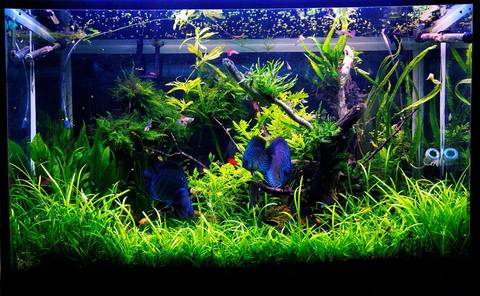
To control the height of the plant, you can increase your light intensity. The more intense the light, the shorter Drawf Sagittaria will grow. They spread through runners similar to terrestrial grass-like St. Augustine or Bermuda grass. If they grow in an area you don’t want them to be, just pull the runners out.
The Dwarf Sagittaria offered in the link is a tissue culture plant. It is one of the more difficult plants to find tissue culture due to how the plant grows. At the rate these plants spread, you should have good coverage on your aquarium floor within a few months of planting.
Dwarf Sagittaria may be able to thrive without CO2 but does require fertilizer given its root-feeding nature.
Pros
- Grows fast
- Cheap
- Can control the size with light intensity
Cons
- Needs fertilizer
Dwarf Sagittaria Specs
- Light Requirements – Low
- Growth Rate – Fast
- Water Parameters – 72 to 82 degrees F, pH 6.5-7.5, soft to moderately hard
- Best Location – Foreground
- Feed Type – Root Feeder
10. Micro Amazon Swords – Fast Spreading Mid-Ground Cover
A mid-ground plant that is fast growing and easy to grow
Mid-ground plants that are fast-growing and easy to grow are hard to find on this list. Micro Swords are the best candidate for this list. They are usually labeled as foreground plants, but given their size of 4-6 inches, they can be used as mid-ground plants in shorter tanks. It will grow well without CO2 and does fine in a low-light tank.
Micro Swords are available in either pots or tissue culture. Both options are quickly split up and spread around your tank, given that the plant grows. Its splitting ability can give you more plants to start with since the plant reproduces with runners.
As with all rooted plants on this list, make sure to fertilize them at a minimum to keep them healthy.
Pros
- Grows fast
- It doesn’t need CO2
Cons
- Needs fertilizer
Micro Sword Specs
- Light Requirements – Low
- Growth Rate – Fast
- Water Parameters – 70 to 82 degrees F, pH 6.8-7.5, soft to moderately hard
- Best Location – Mid-Ground
- Feed Type – Root Feeder
11. Christmas Moss – Perfect Ground Cover for Shrimp Tanks!
A easy to care ground cover plant that is an excellent choice for shrimp tanks
Christmas moss is an excellent live aquarium plant for freshwater shrimp tanks. They are fluffy, which makes them excellent for baby shrimp and it’s really easy to attach them to rocks or driftwood. They grow very fast and will get tall if you do not prune them.
This Christmas moss comes in a mesh pad or dish that is ready to plant or attach to driftwood or rocks. As with all root-feeding aquarium plants on this list, it will require fertilizing feeding to thrive. It also gets a bit dirty with detritus. An Amano shrimp will help with clean-up. I have a separate article about Christmas moss here.
Pros
- Grows fast
- It doesn’t need CO2
- Great for shrimp tanks
Cons
- Needs fertilizer
Christmas Moss Specs
- Light Requirements – Low
- Growth Rate – Moderate to Fast
- Water Parameters – 70 to 82 degrees F, pH 6.8-7.5, soft to moderately hard
- Best Location – Foreground
Feed Type – Root Feeder
My Criteria For Ease Of Care
I need to explain what our selection criteria are for an easy to care for plant. What makes a plant easy to care for? Our criteria would be:
- Hardiness
- Can thrive without CO2 injection
- Can thrive without fertilization
- Can thrive without intense lighting
The list of plants that are recommended beginner plants were selected in the round up above based on these criteria.
How To Choose
Many beginners start out with freshwater aquarium plants by going to their local fish store and picking out random plants that look nice. Usually,, getting what looks nice can be problematic because aquarium plant requirements vary. It will also lead to having a mixed planted tank that doesn’t flow well in your aquarium. All aquarium plants have a type that we should know when picking them out. I’ll explain further.
Why Do You Want Greenery?
Let’s talk about why you want aquarium plants in the first place. Plants offer many benefits in your aquarium. They come with added maintenance, so we want to ensure you are getting plants for the right reasons. Below are the benefits live plants can provide to your fish tank:
- Aquarium plants complete the nitrogen cycle by consuming nitrates in your aquarium
- They provide added oxygen in your aquarium by converting CO2 to oxygen
- Provide places to hide for your fish decreasing stress and mitigating aggression for territory
- It can be used to hide aquarium equipment and accent aquarium rocks and driftwood
Many of these benefits can be done by equipment or media. Keep this in mind when deciding on whether you want plants or not. If you are reading here, I imagine you have decided the benefits of keeping aquarium plants outweigh the additional maintenance,, so let’s continue.
The Different Types
All freshwater aquarium plants are broken down into three plant types. They are:
- Foreground plants
- Mid-ground plants
- Background plants
Foreground
Foreground plants are best placed in the front of your tank. They are shorter plants. Some of these plants are carpeted plants as they will grow fast and spread across your substrate. Foreground plants can be great accents to driftwood as they can be attached to it and grow on the wood.
Mid-Ground
These taller plants are best placed on the sides or middle of your aquarium. They add beauty to your aquarium without taking away swimming space. In shallow tanks, they can be used as background plants.
Background
These tall plants are best placed in the back of your aquarium. They will be rooted plants and need a substrate to anchor to. They provide a pretty backdrop to your aquarium and offer the most shelter for your fish.
One you know what type of plant you are selecting, it makes placement planning much more straightforward.
How They Feed
Each aquarium plant has two ways of absorbing nutrients in your aquarium; these are:
- From your water column
- From its roots through your substrate
Plants that can feed on your water column will be some of the better aquarium plants for beginners. You will not need an active substrate, and you can place them anywhere in the aquarium,, including on rocks and driftwood. Some water column feeding plants can also feed through roots.
Root feeding plants,, in general are more difficult to grow than water column feeding plants. They feed through your substrate, which means your substrate needs to have nutrients available. This will mean you will need to be more selective about the Aquarium Substrate you choose. Active substrates are best for them,, along with regular feedings. There are root-feeding aquarium plants that do not require frequent feedings and will grow.
FAQs
Which Is The Easiest To Grow In A Fish Tank?
The Marimo Moss ball, while not a plant (it’s algae!), is arguably the easiest plant you can grow in a fish tank. It will grow in practical neglect and do well in cold water and tropical aquariums. It can be unrolled and glued down on driftwood and rocks to replicate a mossy look.
Which Are Great For A Freshwater Tank?
The best plants for freshwater aquariums do not need CO2 injection to survive, will do well in a variety of conditions, aren’t eaten by many fish, and get their nutrients from the water column. This makes the Anubias plant species the best all-around plant for a freshwater aquarium.
Can You Root Them In Gravel?
Yes, you can plant aquarium plants in gravel. However, gravel is considered an inert substrate, and many plants that are meant to be planted will need an active substrate or need to be supplemented regularly. You can place column feeders like Java Fern or Anubias on the substrate, but the roots cannot be buried, or they will rot away.
Conclusion
Getting started with aquarium plants is easier than you think when selecting good hardy plants. Every aquarium plant on our list is pretty forgivable for beginner mistakes and will do well without expensive CO2 systems. If you are ready to dive into the world of planted tanks, I recommend you get started with one of the plants on the list. They are sourced from proven and reputable vendors online. If you have any questions, please feel free to comment below. Thanks for reading, and see you next time!
- About the Author
- Latest Posts
I’m thrilled that you found Aquarium Store Depot! Here you’ll find information on fish, aquariums, and all things aquatics related. I’m a hobbyist (being doing this since I was 11) and here to help other hobbyists thrive with their aquariums! I adhere to a high quality Editorial Process and Review products with real life field usage and practical analysis.


